Bikaner is famous for its palaces and forts, built of red sandstone, and is the fourth largest city of Rajasthan state. We had made a hard choice to select Bikaner over Pushkar/Ajmer in our itinerary, but only realised it was more than worth it after we explored the city.
The city is dominated by auto rickshaws for public transportation, may be due to its narrow streets. There are many attractions in Bikaner and choices of excursions, but we limited our itinerary to a few popular ones.
 |
| Rampuria group of Havelis |
We started exploring the city of Bikaner through the
Rampuria group of Havelis, these havelis are created by Baluji Chalva built with dulmera red sandstone with highly ornate windows. These havelis are few of the last remaining and finest examples of Bikaner style of architecture, which is a perfect fusion of Rajasthani and British architectural styles.
 |
| Rampuria group of Havelis |
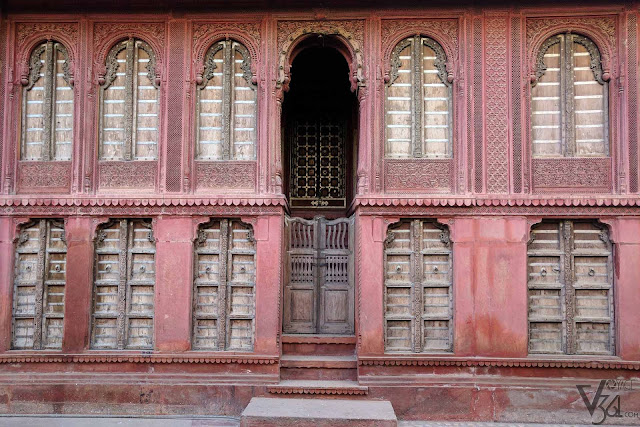 |
| Bikaner style of architecture, Heritage street |
Junagarh fort and palace, & Prachina Museum:
Junagarh fort or Chintamani fort was constructed in the 16th century and is very well maintained. Unlike the other forts in Rajasthan, which are built on hillock, Junagarh fort is standing on the ground level. The fortress covers a small area but has a strong and tall fortification, with a beautiful palace inside it.
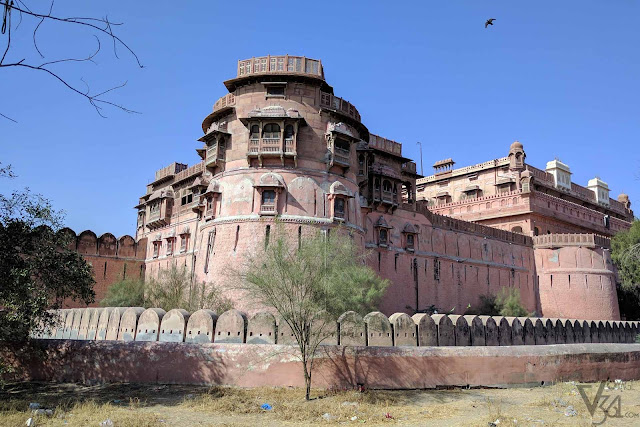 |
| Junagarh fort |
The entry ticket also includes the guide charges and tourists are not allowed to roam inside the palace at will, and only traveled along with the guide, which we felt was very organised.
The palace has many rooms, halls and courtyards, the guided tour takes you through the
Karan Mahal courtyard and then to the Public Audience Hall, the Karan Mahal built in the 17th century.
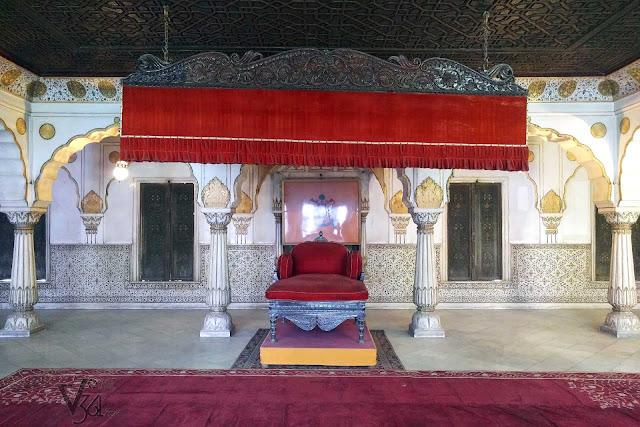 |
| Karan Mahal |
Further through the courtyard of
Anup Mahal we reached the Private council room, the Anup Mahal, which is the most beautiful monument of the Junagarh palace, with the gold vermilion varnished work on its walls and arches. The center of the Anup Mahal features the throne of the ruler.
 |
| Anup Mahal |
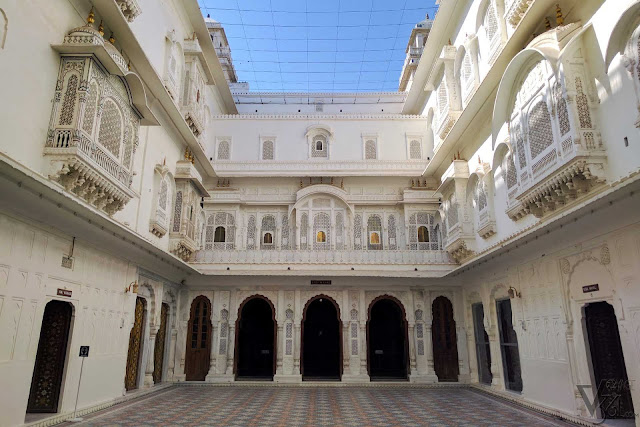 |
| Anup Mahal courtyard, which connects Anup Mahal, Rai Niwas and Badal Mahal |
Badal Mahal or “Cloud Palace” also opens up into the Anup Mahal courtyard, and is painted with blue cloud motifs.
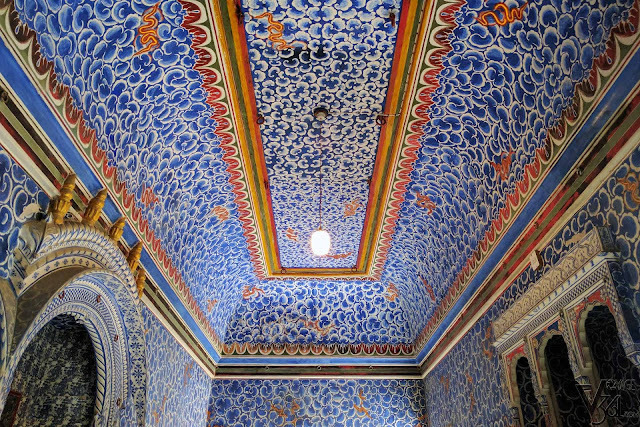 |
| Badal Mahal |
Next came the
Gaj Mandir, which was the private suite of Maharaja Gaj Singh and his two wives. The walls and roof are richly designed with gold paint, colourful murals, stained glass windows, doorways with work of sandalwood and ivory, and mirror cladded walls. Similar to Mehrangarh Palace, the Gaj Mandir Sheesh Mahal was where the King used to sleep.
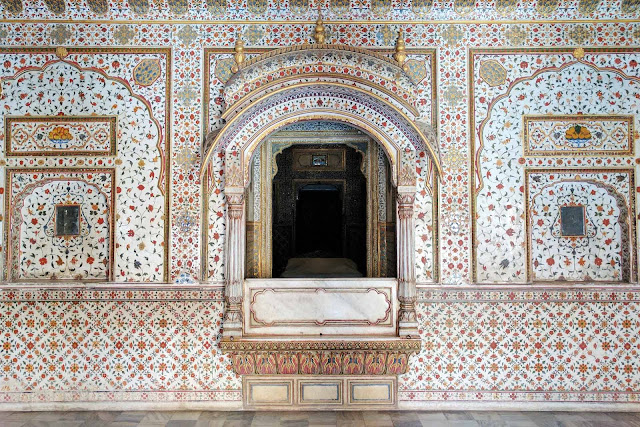 |
| Queens chamber through the window, Gaj Mandir |
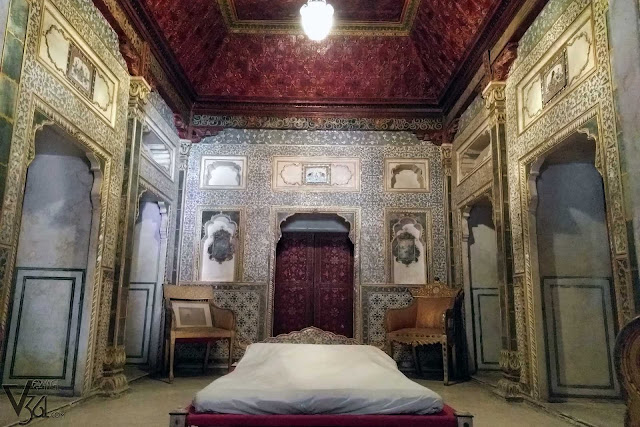 |
| Queens chamber, Gaj Mandir |
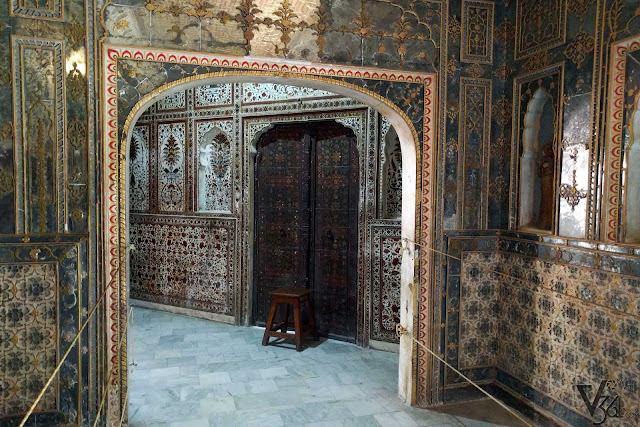 |
| Corridor which leads to Kings chamber, Gaj Mandir |
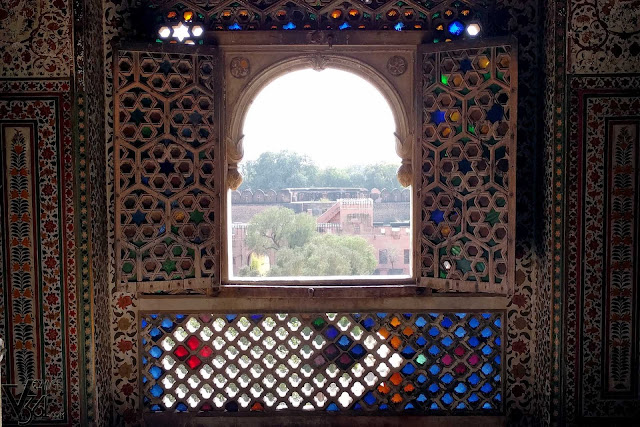 |
| Stained glass windows, Gaj Mandir |
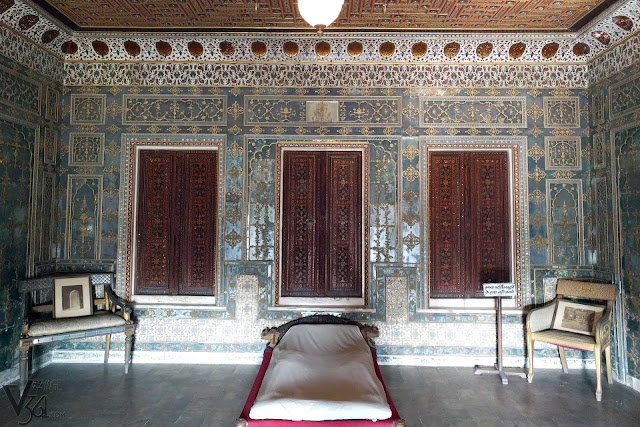 |
| Gaj Mandir Sheesh Mahal (Room of Mirrors) |
 |
| Junagarh Palace |
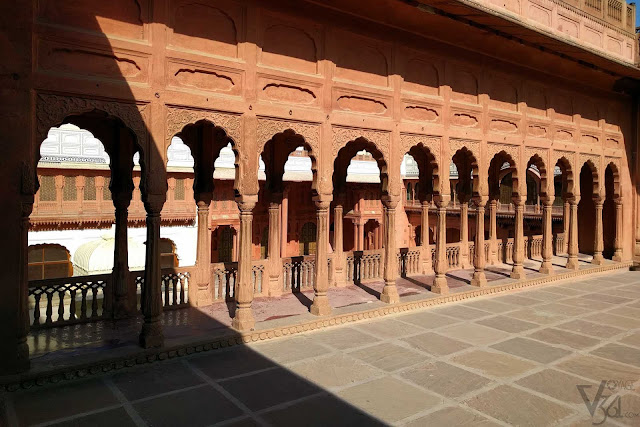 |
| Beautiful Red sandstone corridors inside the Junagarh palace |
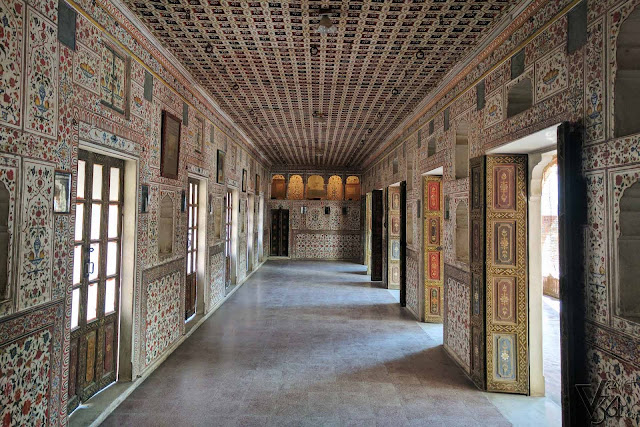 |
| Dungar Niwas |
After crossing the Dungar Niwas we entered the massive
Ganga Durbar Hall, with its pink stone walls covered in fascinating relief carvings. The durbar hall is one of the main highlight of the palace.
 |
| Ganga Durbar Hall |
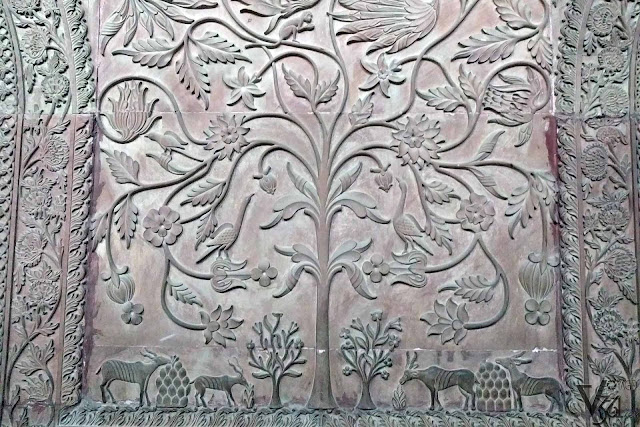 |
| Relief carvings which makes up the interior walls of the Ganga Durbar Hall |
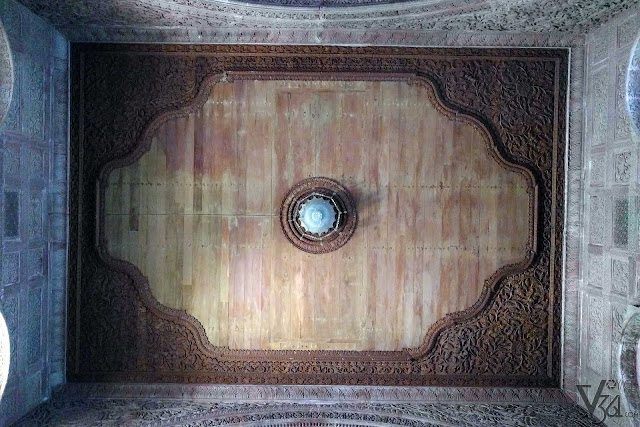 |
| The grand wooden ceilings of the Ganga Durbar Hall |
The last monument of the guided tour was the
Vikram Vilas Durbar Hall, named after great King Vikramaditya. Collection of war souvenirs, elephant howdah and throne can be seen here, including the WWI bomber aircraft.
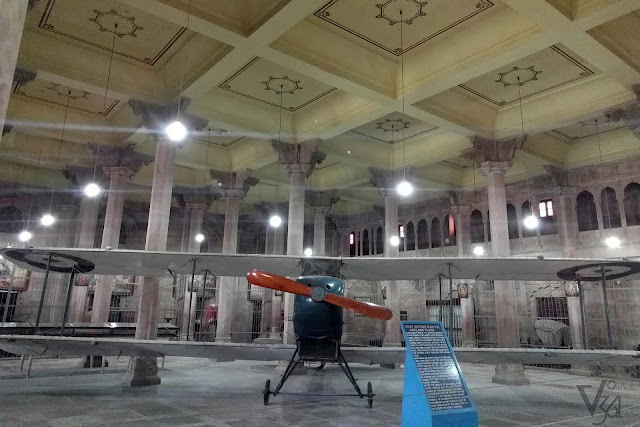 |
| Vikram Vilas Durbar Hall |
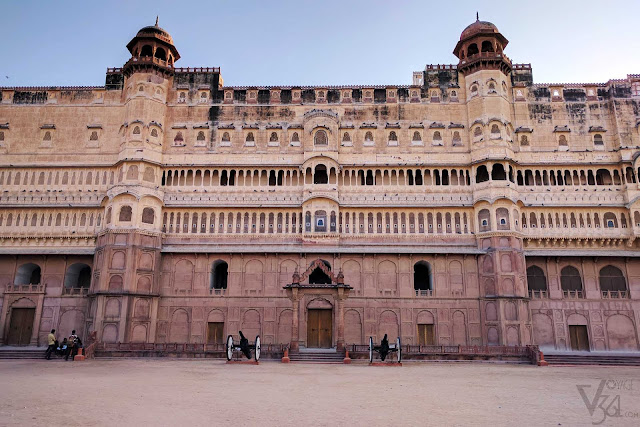 |
| Junagarh Palace facade |
The
Prachina Museum built in front of the Palace, was worth the visit with displays of various Rajasthani royal dresses and the artifacts of the royal family.
 |
| Prachina Museum |
We had our lunch at the Prachina Cafe and took an auto for rental for Lalgarh Palace and back to railway station road.
Lalgarh Palace and Laxmi Niwas Palace were built in the year 1902, entirely of red sandstone and was commissioned by Maharaja Ganga Singh.
This structure displays a fusion of Rajputana, Mughal and European architectures. There is also a small museum built in front of the Palace, which we thought will be an overdose of royal family artifacts after visiting so many museums, and we gave it a miss.
 |
| The main facade of the Laxmi Niwas Palace |
The Palace is segmented into Laxmi Niwas Palace hotel and a royal residence where the Bikaner royal family still lives.
 |
| Lalgarh Palace |
There are many other tourist attractions in Bikaner including the National Research Centre on Camel, the famous Karni Mata Temple at Deshnok, and the sand dunes of the thar desert.
How to reach:
Nearest civil Airport: Jodhpur, Jaipur
Railway: There are two stations Bikaner city railway station and the Lalgarh railway station. Bikaner has direct trains from Jaisalmer, Jodhpur and Jaipur.
Bus: RSRTC buses are available from all the major cities in Rajasthan and tickets can be booked online as well.
























GREAT PHOTO BLOG SIR I HAVE ENJOYED MOST LIKE YOUR PHOTOS THAT YOU HAVE POST IN YOUR BLOG KEEP POSTING. ACTUALLY I AM PLANING TO GO FOR LEH LADAKH DID YOU HAVE ANY LEH LADAKH HOLIDAY PACKAGES PHOTOS .???
ReplyDeleteThanks SWW PINTU. Sorry I've not visited Ladakh.
Delete